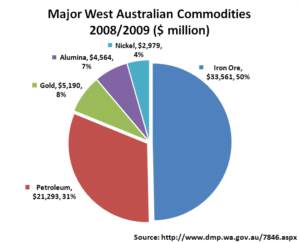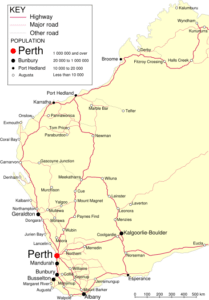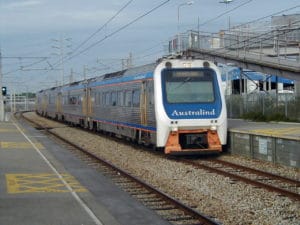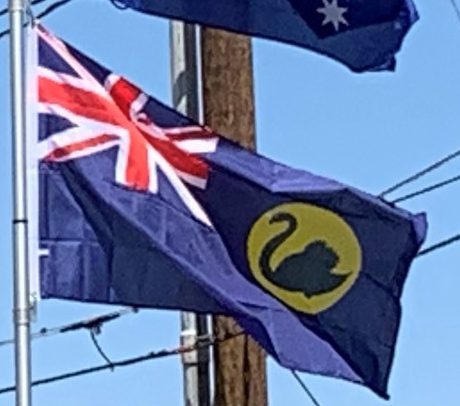
Other significant farm output includes barley, peas, wool, lamb and beef. There is a high level of overseas demand for live animals from WA, driven mainly by southeast Asia’s feedlots and Middle Eastern countries, where cultural and religious traditions and a lack of storage and refrigeration facilities favor live animals over imports of processed meat. About half of Australia’s live cattle exports come from Western Australia.
Resource sector growth in recent years has resulted in significant labor and skills shortages, leading to recent efforts by the state government to encourage interstate and overseas immigration. Recent growth has also contributed to significant rises in average property values in 2006, although values plateaued in 2007. Perth property prices are still the second highest in Australia behind Sydney, and high rental prices continue to be a problem.
Located south of Perth, the heavy industrial area of Kwinana has the nation’s largest oil refinery with a capacity of 146,000 barrels of oil per day, producing most of the state’s petrol and diesel. Kwinana also hosts alumina and nickel processing plants, port facilities for grain and other bulk exports, and support industries for mining and petroleum such as heavy and light engineering, and metal fabrication. Shipbuilding and associated support industries are found at nearby Henderson, just north of Kwinana. Significant secondary industries include cement and building product manufacturing, flour milling, food processing, animal feed production, automotive body building and printing.
In recent years, tourism has grown in importance, with significant numbers of visitors to the state coming from the UK and Ireland (28%), other European countries (14%) Singapore (16%), Japan (10%) and Malaysia (8%). Revenue from tourism is a strong economic driver in many of the smaller population centers outside of Perth, especially in coastal locations.
Western Australia has a significant fishing industry. Products for local consumption and export include western rock lobsters, prawns, crabs, shark and tuna, as well as pearl fishing in the Kimberley region of the state. Processing is conducted along the west coast. Whaling was a key marine industry but ceased at Albany in 1978.
Transport:
Road:
Western Australia has a well developed systems of major roads and highways that connect all major population centers.

Rail:
Transwa controls public transport services outside of Perth, including passenger services from Perth to Kalgoorlie, Northam and Bunbury. These trains are named the Prospector, AvonLink, and Australind.

Great Southern Rail operates the Indian Pacific from Perth to Adelaide and Sydney.
Public Transit:
Perth metropolitan public transport, including trains, buses and ferries, are provided by Transperth, with links to rural areas provided by Transwa. Perth provides zero-fare train trips for SmartRider (travel fare card) holders around the city center (the “Free Transit Zone”), as well as four high-frequency (every 8–15 minutes) Central Area Transit (CAT) bus routes (Red, Blue, Yellow, Green), which, alongside trips on regular Transperth buses in the city center, are free to all users.
